Read this travelogue on Angkor Wat temple located in Cambodia, written by Jayanthi Chandrasekaran. Know in detail about the traveller’s visit to the place and learn about Angkor Wat history, who built it, and get through the highlights of the Angkor Thom and the Ta Prohm temples in Cambodia.
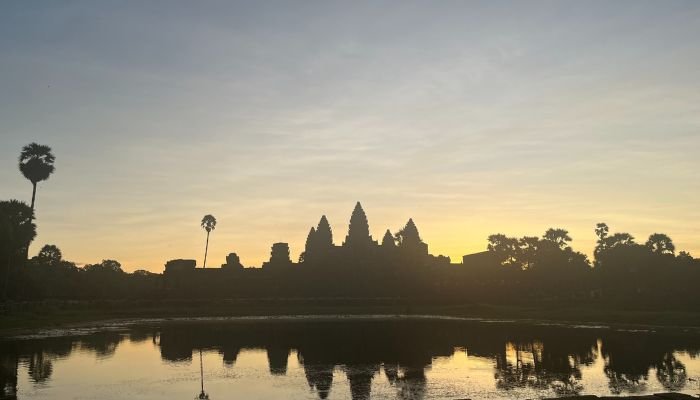
“It is grander than anything left to us by Greece or Rome…the temples, a rival to that of Solomon and erected by some ancient Michelangelo” noted the young French naturalist, Henry Mohout, circa 1860. He was referring to the largest temple complex in the world Angkor Wat, nestled amidst the lush jungles of Siem Reap, Cambodia.
Angkor Wat translates to “City of Temples” in the Khmer language. Today, this 12th-century temple stands as the crown jewel of the Khmer empire, initiated by the visionary King Suryavarman II as a Hindu temple expressing the King’s devotion to the Hindu deity Vishnu. Hinduism dominated Khmer religious beliefs until the end of the 12th century and Angkor Wat was the mighty heart of the largest empire of its time. It was later converted to become a Buddhist monument by the kings who came after him.
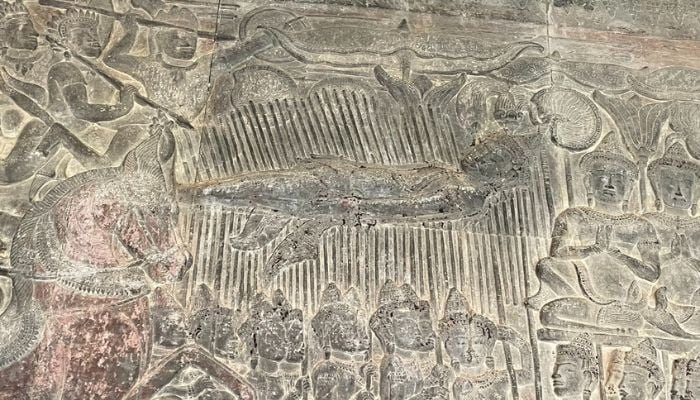
The five central towers of the main temple shaped like a budding lotus represent the peaks of Mount Meru, the sacred abode of Hindu Gods. The temple complex is protected by a 15-foot high wall and surrounded by an enormous moat with a long footbridge allowing access to the complex. The main temple is reached by passing through three galleries and the walls are covered with high-quality bas-relief structures representing Hindu Gods, scenes from Mahabharata, Ramayana, Khmer history and representation of heaven and hell.
ALSO READ: Cu Chi Tunnels, Vietnam – Where You Crouch and Crawl
If only stones could talk, they would sing in praise of the Khmer king and military commander Suryavarman II, his extraordinary power, wealth and his patronage of the arts and artists. During his rule of the Khmer empire, King Suryavarman II, maintained friendly relationships with Kulothunga Chozhan I who was the grandson of Rajendra Chozhan I. The latter’s father Rajaraja Chozhan built the Raja Rajeeswaram temple (the Big Temple) in Chola’s capital city of Thanjavur. Scholars believe that Suryavarman II took his inspiration from Cholas and envisioned a temple complex of a grander scale as a testimony to his great Khmer empire. Indeed, the sandstone structure of Angkor Wat and the bas reliefs on the galleries of Angkor Wat have immortalised his legacy.
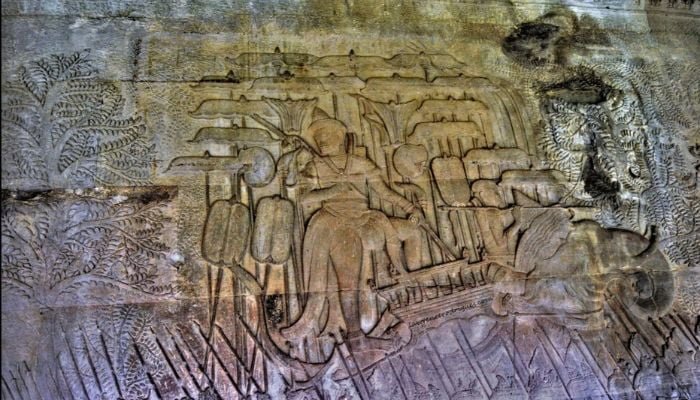
The southern gallery of the west section depicts the epic war of Kurukshetra between Pandavas and Kauravas described in Mahabharata. The bas-relief on the north section of the western gallery describes the Battle of Lanka from the Hindu epic Ramayana. The south section of the western gallery brings to life the procession of King Suryavarman II and the display of his military might. The King is seen standing on an elephant holding a sword and surrounded by 15 parasols. The rank of the commanders is indicated by the number of parasols surrounding them. 15 is the highest number indicating that the King is the commander-in-chief. The king is in procession with his commanders, soldiers, courtiers and the citizens.
ALSO READ: Karwar, Where Time Stands Still
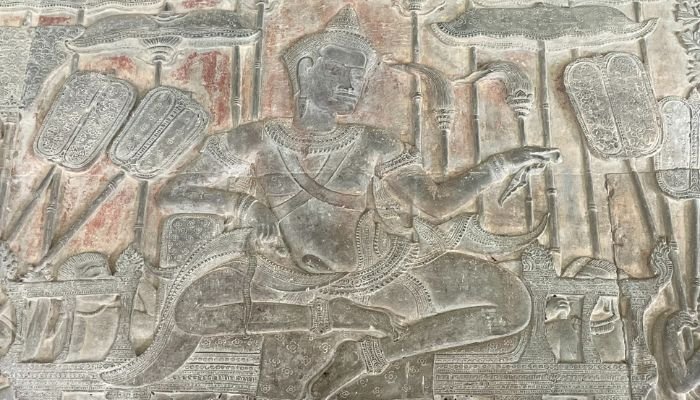
In another part, King Suryavarman II is seated on a throne fanned by servants. He is sitting cross-legged adorned in beautiful jewellery such as bracelets, rings, anklets, necklaces and waist chains. His right-hand holds a mysterious dead snake!

Although the entrance ticket to Angkor Wat is valid for three days, if people have just a day to spare they do the small circuit which covers Angkor Wat, Angkor Thom and Ta Prohm, all vying with each other in detail. Angkor Thom consists of the mammoth Bayon Temple which takes your breath away with its complex architecture. The smiling face-towers although in ruins, Buddha and Naga statues and a series of bas reliefs in the inner and outer galleries are part of a massive walled city inside Angkor Thom.
ALSO READ: Dudhsagar Falls: Nature’s Hidden Gem in Goa!

Another must-see temple in the small circuit is Ta Prohm. The interesting feature of Ta Prohm temple is that it is held in a stranglehold of trees where the stone and wood clasp each other for centuries. Neak Pean (the entwined snakes) is a small temple located on an island in the centre of a water reservoir. A wooded walkway across a lake to get to this temple makes it interesting.
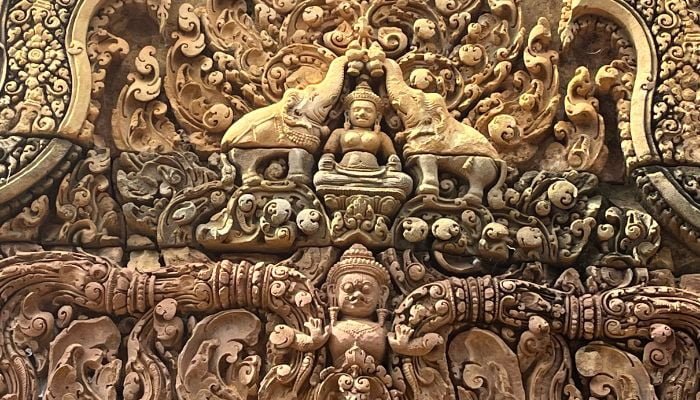
The serene Banteay Serai (citadel of women), known locally as a pink temple, lies about 25 km northeast of the main group of temples. It’s made largely of pink sandstone and contains beautiful carvings of Lakshmi and other Gods and Goddesses. The intricate carvings at this temple are part of the rich tapestry of Angkor’s history.
The Portuguese friar, António da Madelena, said to be the first Westerner to have visited Angkor Wat in 1589, exalts the monument thus – “it is not possible to describe it with a pen, particularly since it is like no other building in the world. It has towers and decoration and all the refinements which the human genius can conceive of.” The least I could do was to soak up every last bit of the scenes on the basreliefs, get overwhelmed with the magnificence of the temples and wish to bottle them up so that I could hold on to them for the rest of my life.
ALSO READ: Enchanting Cliffs in Emerald Isle – The Cliffs of Moher in Ireland!
ALSO READ: The Sacred Ensembles of Hoysalas
